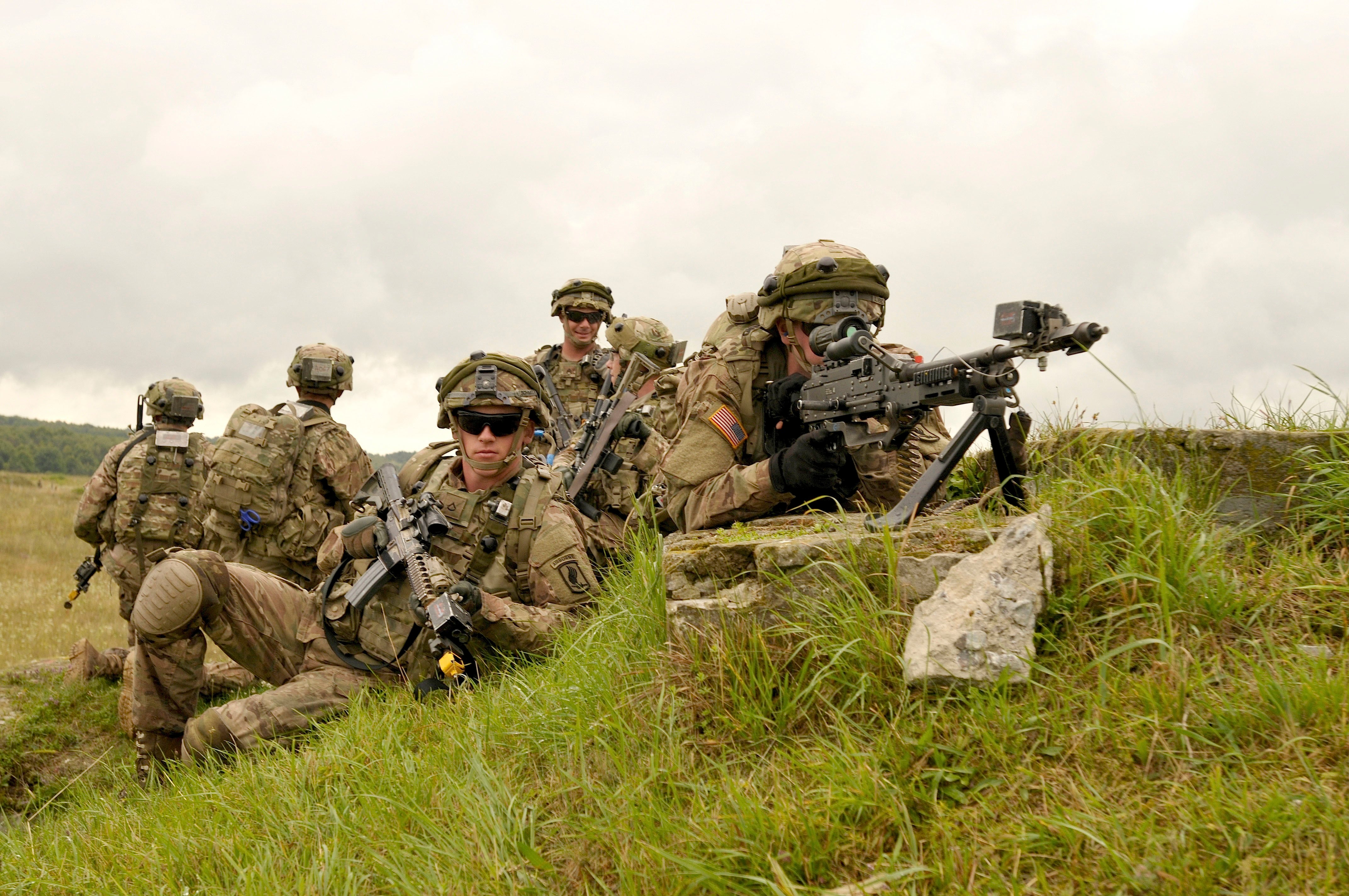WASHINGTON – Fighting in Ukraine continues to show senior Army leaders and thinkers the value of two things that the service hasn’t been doing at scale for a long, long time — reconstitution and long-range, large-unit dispersion.
Brigade combat teams covered vast areas in counterinsurgency fights in Iraq and Afghanistan. But they simply won’t have the manpower to cover the same distance in a large-scale combat operation against Russia or China, said experts on a panel Monday at the annual Association of the U.S. Army meeting and exposition.
“One thing that we should remember is the space in which the Russians are conducting combat operations — it’s about 150 times as large as the National Training Center,” said James Greer, associate professor at the Army’s School of Advanced Military Studies. “The distance from Poland to the frontlines that we’d have to fight is about 1,100 km. Again, that’s 50 times the distances we fight at the National Training Center.
Greer said the Russian force in Ukraine is equivalent to two full corps from the Army.
That means that units must disperse in non-contiguous fighting, and sometimes, far from help, whether that’s resupply or even seeing the common operating picture, Greer said.
Dispersion goes beyond the traditional battlefield concerns. Deputy Undersecretary of the Army Mario Diaz told the audience that dispersion matters at home station and across the nation.
“Any force that has to fight in 2030 or beyond, we need to be prepared for a very active campaign against the homeland,” Diaz said. “And dispersion in that sense could be due to an inability to get what we need from our ports or into (U.S. Indo-Pacific Command).”
The dispersion of forces across the United States, based at a variety of locations, has been a strength, allowing the Army to avoid massing its units in one vulnerable location.
And those units may have to reform or reconstitute, as Greer and others said, much like the Army had to do during intense campaigns in World War II, echoes of which are seen in Ukraine today.
“Reconstitution is absolutely an imperative,” Greer said. “It’s something we can see both sides doing over and over and over again because of the destruction — the casualties everyone’s taken.”
Reconstitution of units has to happen at a division or corps level, which is where the Army’s warfighting plans are headed.
Though Greer said the seeds of dispersed fighting exist within the Army, most commanders who’ve taken units, be they battalions or brigades, to Iraq or Afghanistan have had to operate dispersed, sometimes across an entire combatant command.
But those dispersions were at a smaller scale and against a less developed adversary.
Lt. Gen. Milford Beagle Jr., Combined Arms Center commander, said the fundamental aspect that undergirds the Army’s new doctrine, Multi-Domain Operations, is that it is designed for large-scale combat.
And the force is adding structure, personnel and equipment to enable the division and corps to take on those tasks that were left to the brigade combat teams in recent wars.
But brigade commanders won’t want for a job to do, one four-star said.
“Critics will say you’re going backward to go to a division,” said Gen. James Rainey, head of Army Futures Command. “First of all, everything we do is threat informed.”
The quickness with which brigade-level commanders must act in future combat will be unparalleled.
“The (large scale combat operation) against a peer threat, the amount of complexity, speed, violence, chaos tells us that our great (brigade) commanders are going to be wholly consumed winning the fight they’re in,” Rainey said.
Those commanders won’t have three days to plan a mission, he added. They won’t have a server farm wrapped in concertina wire with a 300-person support staff to give them a common operating picture in a vulnerable command post.
The brigades will get smaller but will fight more frequently with better tools. And they must fight longer.
Greer said the focus now is not only on having the brigade, division and corps win the fight it faces, but also keeping units in the fight for weeks, or even months.
“We got to be able to do more killing with smaller formations than we do now,” Rainey said.
Todd South has written about crime, courts, government and the military for multiple publications since 2004 and was named a 2014 Pulitzer finalist for a co-written project on witness intimidation. Todd is a Marine veteran of the Iraq War.




